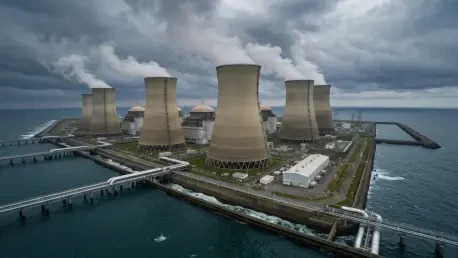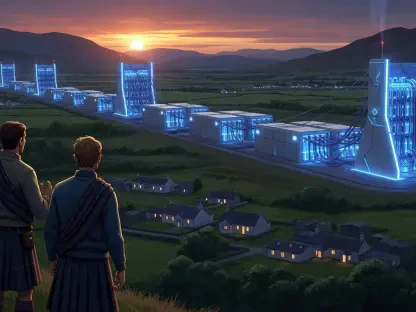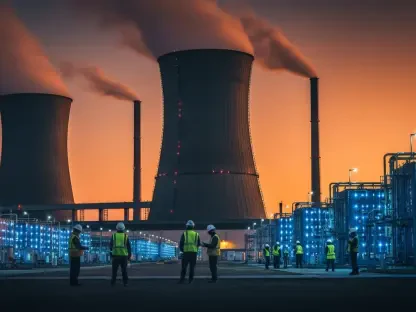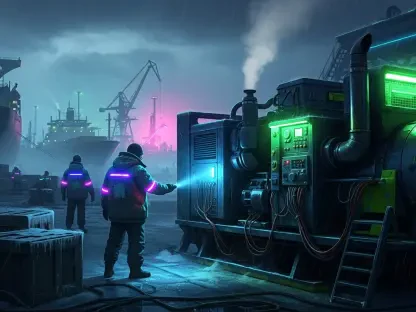What does it take for a nation scarred by nuclear disaster to embrace the very technology that once shattered its trust? In Niigata Prefecture, a monumental decision looms as Governor Hideyo Hanazumi stands ready to approve the restart of the Kashiwazaki-Kariwa nuclear power plant, the largest of its kind in the world. This isn’t just a local policy shift; it’s a seismic moment for Japan, a country wrestling with energy insecurity and the ghosts of Fukushima. The stakes are high, the debate is fierce, and the outcome could redefine how Japan powers its future.
Why This Restart Matters Now
The significance of restarting Kashiwazaki-Kariwa cannot be overstated. With a staggering capacity of 8,212 megawatts, this facility could become a cornerstone of Japan’s energy strategy at a time when the nation, the world’s second-largest importer of liquefied natural gas (LNG), grapples with skyrocketing energy costs. Reducing reliance on foreign fuel isn’t merely an economic goal—it’s a national imperative under Prime Minister Sanae Takaichi’s administration, which sees nuclear power as a path to stability.
This decision also arrives against a backdrop of historical weight. The 2011 Fukushima disaster left deep scars, halting nuclear operations nationwide and sparking rigorous safety overhauls. Approving this restart signals a cautious yet determined step toward reclaiming domestic energy production, balancing public apprehension with the urgent need for affordable power. It’s a test of whether Japan can move beyond past trauma to secure its future.
The Scale of Kashiwazaki-Kariwa’s Comeback
Operated by Tokyo Electric Power Company Holdings (TEPCO), the Kashiwazaki-Kariwa plant isn’t just big—it’s a titan in the nuclear world. The plan focuses on reactivating Units No. 6 and No. 7, which together can produce 2,710 megawatts, enough to power millions of homes. Meanwhile, older units may face decommissioning, reflecting a strategic pivot to modern, safer systems.
Economically, the impact is profound. TEPCO estimates that bringing even a single reactor online could boost its annual net profit by 100 billion yen, roughly $644 million, a vital lifeline for a company still burdened by Fukushima-related compensation costs. Beyond corporate gains, analysts predict that reactivating Unit No. 6 alone could cut LNG demand by 1 million tons annually, easing Japan’s import bill and stabilizing energy markets.
The ripple effects extend to the national level. With Japan’s LNG imports projected to drop significantly with increased nuclear output, the restart aligns with broader goals of energy independence. This isn’t just about numbers—it’s about reshaping how the country meets its power needs in an era of global uncertainty.
Voices Fueling the Nuclear Debate
Governor Hanazumi’s impending approval, slated for discussion with the prefectural assembly soon, underscores the critical role of local buy-in. His decision isn’t made in isolation; it reflects months of dialogue with communities still wary of nuclear risks. The shadow of Fukushima looms large, and gaining trust is no small feat in Niigata, a region directly affected by past safety concerns.
Nationally, Prime Minister Takaichi champions this move as a pillar of economic relief. Her administration argues that nuclear restarts are essential to curb living costs tied to imported fuel, even as public opinion remains divided. Kpler analyst Go Katayama adds a data-driven perspective, highlighting how reduced LNG reliance could reshape Japan’s energy footprint, offering a pragmatic case for the restart.
TEPCO, aware of the skepticism, has pledged 100 billion yen to support Niigata communities, a gesture aimed at softening opposition. This financial commitment reveals a corporate effort to rebuild bridges with locals, showing that the path to nuclear revival isn’t just technical—it’s deeply human, rooted in addressing fears and fostering goodwill.
A Blueprint for Japan’s Nuclear Future
Navigating this restart offers lessons for Japan’s broader energy policy. Transparency stands as a non-negotiable priority; communities and local leaders must receive clear updates on safety protocols, building on reforms that have already allowed 11 reactors to operate safely with a combined capacity of 10,647 megawatts as of this year. Trust isn’t assumed—it’s earned through consistent, honest communication.
Economic incentives also play a pivotal role. TEPCO’s substantial investment in Niigata sets a precedent for how industry can partner with regions to offset concerns, ensuring that benefits are tangible for those most affected. Aligning such restarts with national objectives, like cutting LNG imports, further justifies nuclear expansion as a strategic tool, not a reckless gamble.
Ultimately, this moment at Kashiwazaki-Kariwa could serve as a model. By blending rigorous safety standards with community engagement and policy alignment, Japan has the chance to transform a divisive issue into a framework for sustainable energy progress, proving that nuclear power can coexist with public confidence if handled with care.
Reflecting on a Historic Turning Point
Looking back, the approval process for Kashiwazaki-Kariwa marked a defining chapter in Japan’s journey toward energy resilience. It challenged the nation to confront lingering doubts while seizing an opportunity to lighten the burden of imported fuel. The dialogue between local leaders, national policymakers, and industry players set a tone of cautious optimism.
As Japan moved forward, the focus shifted to actionable steps: strengthening safety oversight, deepening community partnerships, and scaling nuclear capacity with precision. Policymakers and stakeholders alike recognized that success hinged on maintaining trust, ensuring that each restart built on lessons from the past. This wasn’t just about powering homes—it was about powering a renewed vision for a self-reliant future.









